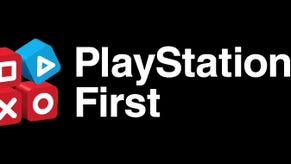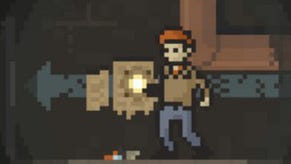Interview - SCEE's Andrew House
Andrew House, president, CEO and CFO of SCEE, has been in the PlayStation business forever, it seems.
He's held many executive positions within Sony - VP of marketing, CMO, and group executive to name a few - and he played an integral role in developing the PlayStation brand into a household name in North America.
Therefore, it's safe to say that the gentleman knows a thing or two about Sony's consoles and the business end of those products.
Being the inquisitive types, we wanted to pick his brain a bit, and lucky for us he was on hand today after Sony's E3 press conference.
[Interview by Nathan Grayson]
VG247: Microsoft seems to be positioning its biggest guns in the casual sector. What about you? Do you see this as an opportunity to lure hardcore players away from Microsoft’s machine? What’s your focus in this regard, and do you think Microsoft is focusing too heavily on casual gaming?
Andrew House: I don’t think we take a simplistic, targeted view of the gaming universe. I don’t think we approach the market as saying “Let’s go casual, because that’s where everyone seems to be rushing to,” or “Let’s go hardcore!”
We’re in the business of mass entertainment – of creating experiences that are embraced by everybody. I think the critical thing around PlayStation Move is that it runs the gambit. What we tried to demonstrate in our press conference is that it’s equally powerful when applied to social games as when it is applied to more serious games – a SOCOM 4. Or the credibility it established by showing a brand new game like Sorcery that could equally well be played without Move, but is suddenly a more enhanced and deeper experience when you do have this interface and this controller.
And I also think that – for us – it’s about the precision of the movement, the depth that it generates. That really should be able to be applied across the board, regardless of whether these are casual experiences or more in-depth.
VG247: On that note, we’ve seen Kinect. It seems very precise and allows for full-body control. Why should players choose Move over Kinect?
Andrew House: I think number one is ease of development. I think it’s a lot easier to be able to apply Move to games that are in genres that are already in existence across a whole variety of experiences. I think that the comfort level of having a controller interface is still something I think the average consumer is going to want. I think the fact that we have these little things called buttons on there – that human beings have been kind of pretty used to as an interface for, you know, a few centuries now – is really part and parcel of why Move is probably the perfect combination of technologies within motion control.
Buttons haven’t been around for centuries, have they? Maybe about the last century. Victorian times. [laughs]. Are you positioning Move to be an essential part of the PS3 experience? Is it the future of the console?
House: Taking the question and rephrasing it a little, I’ve been asked “Is it a peripheral or is it a new platform?” I think it’s somewhere in-between. But to me, it has more of the impact of a new platform than just an add-on peripheral.
I think we intend this to be a centerpiece of the PlayStation 3 offering, but I wouldn’t say it to the exclusion of millions of players who are already out there using controllers to enjoy their games. That still has a very fundamental part and role to play.
How about 3D? Do you plan on using the PS3’s 3D functionality to get 3D TVs into homes the same way you’ve already used the console for Blu-Ray proliferation?
House: I definitely think that’s one part of the strategy, and I think it’s a key area where Sony Computer Entertainment can contribute to a wider Sony strategy that is centered around 3D. But I think– more importantly for me – is that we are in a unique position of being able to validate the 3D experience via a form of entertainment that isn’t just movies.
It’s interactive and potentially far more powerful.
I think, also, that the point of 3D is that we are in the process right now of demonstrating future potential. Whereas Move is here now, launching in September, and will be a very prominent part of games from now on.
I think 3D is part of a longer term strategy, but one where we continue to add more value to the PS3 that you already own. And I think that’s become a big theme for us, and I think that’s one of the reasons that – if you look at sales figures right now – PS3 is the only platform that’s showing consistent year-on-year growth. Because people are starting to see more and more potential of the machine.
The other final factor I would say about 3D is that – more than just being a tactic to promote 3D TVs – I think it’s also for us an important way of getting people to understand the power and interest of gaming. It’s an easy to understand way of perhaps welcoming in a new potential audience.
Is there going to be another PS3 price drop this year?
Lewis: I would say that we would have announced that today if we had plans to do so in the immediate future.
Ok. Onto the PSP now. The PSP’s been cleaning up in Japan, but elsewhere, it’s been on the ropes lately. What’s your plan going forward to reinvigorate sales of the console?
House: I think there’s two strands to that. One is a continued stream of good exclusive content – including that from first-party which we continue to work very hard on. But I think another important strand was something we announced fairly recently: the PSP Essentials line.
I think it’s important at this point in the life cycle to show a broad range of consumers that this is a really good value proposition, and having a whole set of really good, proven quality titles available at $9.99 is really a powerful message. And it’s something that we can do because of the UMD medium that we use and the fact that these games are well-established and have engendered really good sales worldwide.
So I think that’s another way we make this a very attractive value proposition and continue to sort of broaden that PSP spread.
Is there another PSP model on the horizon? Will get a glimpse of it this year perhaps?
House: No plans to discuss anything around next generation right now. I think it’s important that we keep our focus on building great content for the great devices we have out now.
Today you announced PlayStation+, which is a pricing model for PSN that includes a whole host of bonus content. Are you afraid, though, of dividing your consumer base between the haves and the have-nots? Those who have reaped the rewards of PS+ versus those who haven’t?
House: No, I don’t think so. I think that people are sort of used to models emerging particularly on the network whereby you pay for the degree of allegiance or involvement that you want. We’re offering this as an option.
I think it was in response to having heard from consumers great happiness about the variety of online services that we have been launching – about what’s available on the network overall. But there was also a voice that thirsted for more. They wanted more – to be part of a club that gets more and gets more on the network. So for that more involved consumer that wants to be more involved on the network, we made PlayStation+ available, and said, “There’s a price point associated.” [PR motions that we’re running low on time.]
The Xbox 360 and PS3 are hitting a very late mid-life. Graphically speaking, isn’t this where the PS3 is supposed to start pulling ahead? Do you see that becoming a factor in people’s decision to buy a console? Will PS3 finally live up to its reputation as the souped-up hotrod of the console world?
House: It’s likely to be a factor, but not the factor. I think there will be a variety of areas where – for me – PS3 is already hitting its stride for a longer life cycle. We’ve talked about 3D as being one of those capabilities.
I think one of the reasons a lot of people are starting to embrace PS3 and see value in it is, we shouldn’t forget that Blu-Ray was very new, and was in the middle of a format war when PS3 was first announced. Now there’s settled standard. It’s supported by every studio out there. And just the general awareness of Blu-Ray and HD has really taken on a life of its own in the past few years. So I think PS3 is really starting to take advantage of that.
You’re seeing it in the sales figures where we are now certainly in the power region – consistently and very forcefully outselling the 360 week in and week out.
You said in another interview that the PSPgo was released to test the waters of consumer behavior. Your finding: people like packaged stuff. Do you think we’ll ever go completely digital, or will physical media always be a factor?
House: I think it’s very difficult to make predictions because you’re asking a prediction about the degree of data capacity that will be involved in game experiences that we haven’t even seen yet.
The main reason I ask is that the PSPgo’s sales weren’t all that hot, but the iPhone’s managed to carve out an enormous all-digital market. It doesn’t have a slice of the pie. It is the pie. So why do you think the iPhone caught on where the PSPgo couldn’t?
House: I think that’s really interesting, but I think the data capacity becomes a real factor there. [iPhone games] are small-scale, data-tiny experiences, and clearly Apple has proved that there’s an online marketplace for that. But when I look at the trend toward bigger, deeper, more intense experiences – certainly on home consoles – I think packaged media will be around for quite some time.
I also think that – as you quite rightly quoted me – consumers have, even for their portable devices, an attachment to the games they already own in the packaged format that perhaps we underestimated.










